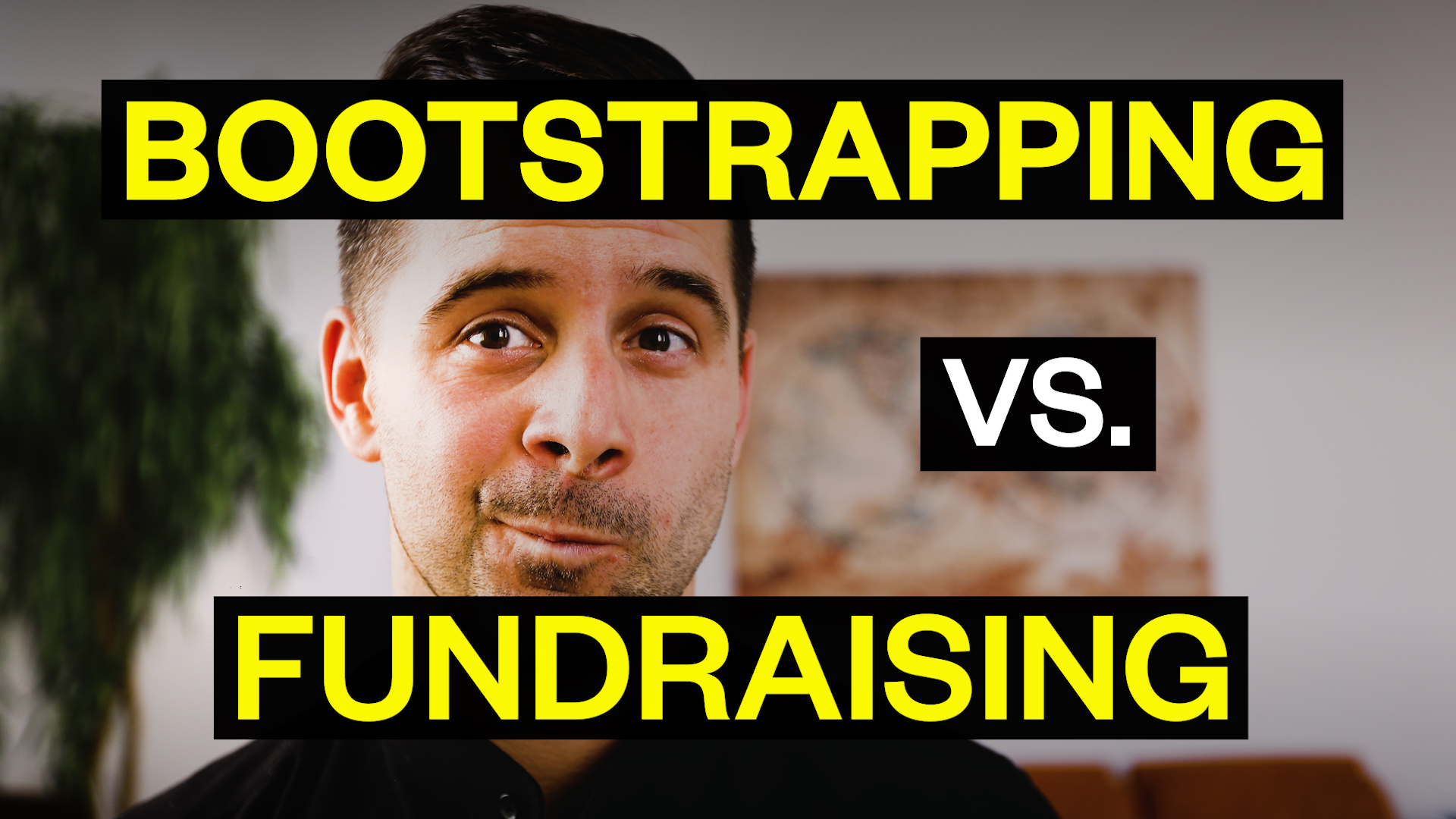A question that comes up very often in my conversations with founders is related to bootstrapping versus raising funds. How long should you try and bootstrap your startup? How long should you grow organically? And at what point should you raise funds? Check out the video to learn about my thoughts to these questions.
Hey everyone. Today I had lunch with a local founder here in Lisbon. And among other topics, we talked about bootstrapping versus raising funds. That’s a question that comes up quite often. And to give you a bit of context on what this means is how long you should try and bootstrap your startup? How long should you grow organically? And at what point should you raise funds, and try to go all-in and grow faster than you will be able to with just the proceeds from your current sales.
And it’s a topic that’s often discussed, I think, a very, very high level at least a few years ago what he could have said is that in the US, the story was always: raise funds early, grow as quick as you can. Don’t worry about making a profit along the way and try to make it either really, really big, or fail somewhere quickly along the way. And in Europe, the story would have been: try to build a sustainable business, proof early on that you can not just burn money, but you can actually turn a profit, use those profits to grow step by step and create a really good foundation on which your business can only be stronger and stronger.
The European model
Personally, if I had to summarize my approach and advice is in your first year or two, go with the European model, try not to take in outside money because it gives you a lot of freedom and flexibility to pivot and to adapt and to change and to recognize and learn about the space that you’re in. But once you do hit that point where you understand you have product-market fit, you have a product that’s selling; you have incoming demand for what you’re building, then do not miss out on the momentum and go all in, raise funds. And don’t be afraid of spending more than what you are turning in terms of profit every month.
Don’t be afraid to have years where you are going to be unprofitable, best case, even a decade. Capitalize on the fact that you have found a niche that you have built a product that is ready to be scaled, that you have product-market fit, and now make sure you can be the world leader. Because it’s very seldom the case that you can build a product in Switzerland, Germany or somewhere in Europe in one of the local markets. And it can be built in such a profitable way that it gives you enough funds to scale quickly worldwide. The problem with not raising funds at that point and scaling quickly is that there might be competitors in other markets that have easy access to capital, be it in Asia, be it in the US, or even a competitor in Europe that raises big. And then copies or at least gets inspired by some of the things that you’ve learned throughout the first couple of years of your journey until you reach product-market fit, takes that idea and takes those learnings and then scales it up quicker than you do and in the process pushes you out of the market.
Of course, that is not without risk. There’s plenty of cases where entering that scaling phase is what breaks the company because it’s hard to add a lot of people to your culture in any given month, in any given week, or even in any given year. Of course, there’s going to be cultural barriers because your next market is never going to feel as familiar and cozy as your home market and lots more.
But don’t be afraid, go big at that point when you feel that you have product-market fit. It’s not something that happens all the time, make sure to use that rare opportunity to go all in and grow something really big.
So just quickly on this topic that I discussed with a founder here in Lisbon today. Bootstrapping versus fundraising, I personally think bootstrap as long as you can at the beginning, as long as you do not have a clear indication of product-market fit, but once step point has come, be not afraid to raise money and turn your probably profitable business into one that’s unprofitable in order to grow and scale quickly.
If you have other opinions about bootstrapping versus fundraising. And if you have any experiences that either I could profit from or anyone watching this video, please leave them in the comments.
And with that, have a beautiful day, stay curious, and I’ll talk to you soon.




